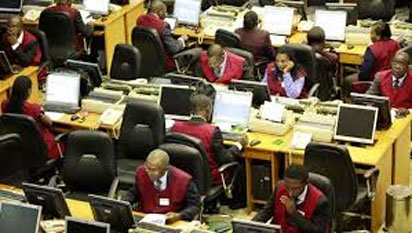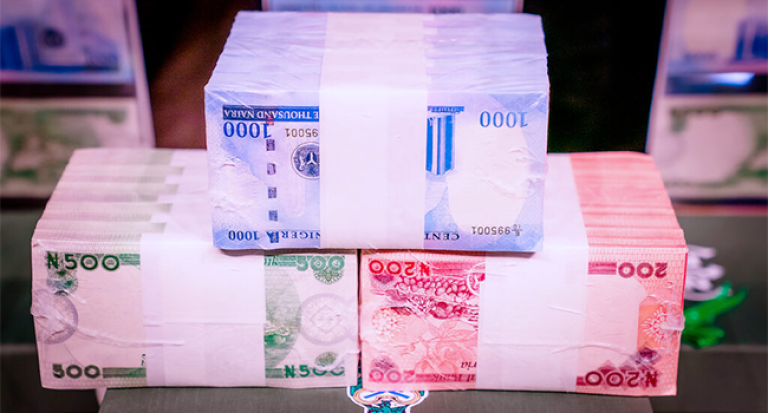
The Nigerian Stock Exchange (NSE) has issued guidelines on its market-halting mechanism after the combined impact of the pandemic Coronavirus and crude oil crash fuelled massive selloffs that drove most stocks to their lowest prices in more than a year.
The steep decline almost brought the market to the five per cent trigger for the market-halt system.
The trading-halt system, known as index circuit breaker, is coupled with the NSE’s benchmark index, the All Share Index (ASI). It triggers automatic shutdown of the market if there is extreme volatile trading. The first trigger is indexed at five per cent. The index circuit breaker, meanwhile, deals with extremely volatile upward and downward movements of share prices.
A circuit breaker is a trading halt used by an exchange to guard against sharp fluctuations. It is designed to give the market an opportunity to take a break and adjust to all available information before re-opening. It provides protection against excessive volatility during continuous trading sessions of the market.
Nigerian stocks closed weekend with a net depreciation of N1.85 trillion. The market recorded steep declines in four consecutive trading sessions with the ASI dropping by 4.9 per cent at a trading session, a basis point to the five per cent trigger. The NSE subsequently issued the interpretative guidance on the index circuit breaker.
Several Nigeria’s leading stocks closed at their lowest prices in more than a year at the weekend including Nigeria’s largest telecommunication company, brewer, food manufacturer and consumer goods companies. Most leading tier 1 banks hovered around their lowest prices while most insurance companies were traded some 60 per cent below their nominal values.
The benchmark ASI closed weekend with a net depreciation of 13.49 per cent for the week, its largest weekly decline in recent period. Aggregate market value of all quoted equities at the NSE dropped from the week’s opening value of N13.695 trillion to close weekend at N11.847 trillion, representing a drop of N1.85 trillion. The ASI depreciated from the week’s opening index of 26,279.61 points to close weekend at 22,733.35 points.
MTN Nigeria Communications Plc, Nigeria’s largest telecommunication company and second quoted largest company, dropped to its al-time lowest price at N93.20 per share. Its highest price was N159 per share. Nigerian Breweries Plc, Nigeria’s largest brewer, closed weekend at a low of N28 as against highest price of N75 during the period. Nestle Nigeria Plc, the highest-priced stock, slumped to a low of N915.30 compared with its high of N1,580. Cadbury Nigeria Plc depreciated to N4.95 as against a high of N12.40.
Other major stocks at their lowest prices included PZ Cussons Nigeria Plc, N3.75; GlaxoSmithKline Consumer Nigeria, N3.45; CAP, N19.95; Conoil, N14.60 and industry-leader BOC Gases, which dropped to a low of N4.05.
Prior to the institution of the five index circuit breaker, the Nigerian market had declined by more than nine per cent in a day in the heady days of the market recession in 2008.
The world at the weekend panicked around for solution to the pandemic Covid-19 as growing cases, confirmation of positive tests and deaths alarmed world leaders. United States declared a state of national emergency at the weekend, a rare executive declaration that indicates highest level of response. It had earlier placed travel restrictions on 25 European countries. Nigeria has two confirmed cases of Covid-19 while several persons have been quarantined.
Crude oil price closed weekend at $35 per barrel as output cut disagreement between Russia and Saudi Arabia, triggered by Coronavirus scare, left the crude oil market in limbo. Nigeria, which depends on crude oil export for its largest revenue, had benchmarked its 2020 national budget at $57 per barrel. The Federal Government has already indicated it may consider a budget cut in line with the unexpected decline in oil price.
Senior Research Analyst, FXTM, Mr. Lukman Otunuga, said Coronavirus is spreading economic gloom across the world.
“Not even safe-haven Gold has escaped the brutal market sell-off, as the pandemic panic sweeping global equities forced investors to cover margin calls,” Otunuga said.
According to him, it seems the ongoing uncertainty from the Coronavirus outbreak is set to continue burning the outlook for the global economy, despite emergency monetary actions by the trio of Federal Reserve, Bank of England and European Central Bank to rescue markets.
The New York Stock Exchange (NYSE) activated its circuit breaker twice last week, after stocks suffered their worst declines in more than three decades.
“Markets remain in panic mode with risk aversion the dominant theme,” Otunuga said noting that equities across the globe are likely to remain severely depressed amid the darkening mood.
The automated index circuit breaker at the NSE allows the trading engine to automatically halt trading in the first instance of extraordinary market volatility and shut down the market where such volatility continues after the initial pause.
The index circuit breaker relies on Rule 15.46 of the NSE’s Rulebook, 2015 as well as Section 14.2 of the NSE Market Model and Trading Manual. The rules empower NSE to halt trading in all securities for 30 minutes in the event of five per cent rise or decline in ASI.
According to the rule, the market will be closed for the day if at the resumption of the 30-minute break, the ASI witnesses further decline or rise of five per cent.
The NSE also currently has a 10 per cent single-stock circuit breaker, which limits the daily allowable change in the price of any equity to 10 per cent. The ASI-based market-wide circuit breaker will operate in addition to the single stock limit.
“If a market move occurs after 10.15 am and any time up to and including 13.45 pm, the Exchange shall halt trading in all stocks for 30 minutes. The Exchange shall not halt trading if a significant market move occurs after 13.45 pm. The Exchange shall halt and reopen trading based on a significant market move only once per trading day,” the rule stated.
According to the rule, if following the reopening of trading after a significant market move halt, the ASI moves further by a minimum of five per cent below or above its closing value on the immediately preceding trading day, during any trading day the Exchange will halt all trading for the remainder of the day. The last traded price in any security prior to the closing of the market shall be deemed the closing
“Trading halts will only occur in the event that the ASI breaches the 5.0 per cent movement threshold in either direction between 10:15 am and 13:45 pm during a trading day. Trading will not be halted if an Extraordinary Market move occurs after 13:45 pm. In addition, The Exchange will halt and reopen trading based on an Extraordinary Market move only once per trading day,” NSE explained in the interpretative guidance.
Trading halts will however not affect the clearing, settlement and depository operations for matched trades, which will function as normal.
NSE’s circuit breaker is consistent with procedures prescribed by the World Federation of Exchanges (WFE) in its 2008 Report on Circuit Breakers, as well as the International Organization of Securities Commissions (IOSCO) in its 2002 Report on Trading Halts and Market Closures.
Circuit breaker provides the opportunity for greater information dissemination and assimilation to all market participants, including investors to facilitate better informed investment decision making during periods of high market volatility.
According to the NSE, the circuit breakers will be triggered during periods of extraordinary volatility in the equities market to maintain an orderly market, and to allow liquidity to re-aggregate.
“The purpose is to dampen extraordinary volatility swings on market prices by providing time to restore equilibrium between buyers and sellers,” NSE stated.
The NSE noted that circuit breakers have the objective of dampening both market upswings and market downswings, and will complement the price limits on individual stocks already in place.
The Exchange added that the circuit breaker rule seeks to promote just and equitable principles of trade, remove impediments to and improve the mechanism of a free and open market; and protect investors and the public interest. (The Nation)









24858 745172Any person several opportune pieces, it comes surely, as well as you bring in crave of various the several other types of hikers close to you with hard part your question. pre owned awnings 966343
82476 335295I enjoy reading via and I believe this site got some genuinely utilitarian stuff on it! . 375101